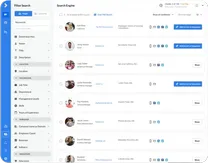
Think of a system that anticipates needs so efficiently that it turns prospects into partners. That system is the B2B sales funnel. Now, there’s no way to overstate how important this funnel is for business-to-business sales.
The B2B sales funnel is great because it puts leads in order. It breaks them down so companies can make a plan for every part of the sale process. People enjoy it because they get the information they need when they demand it.
In our exploration, we’ll dissect the stages of the funnel, examine various models, delve into the creation process, and share strategies for funnel optimization. We’ll show you how to convert prospects to loyal customers.
What is A B2B Sales Funnel?
A B2B sales funnel is a series of steps that businesses take when deciding to purchase from you. It’s a path that starts with them becoming aware of your product and ends with them buying it. Here’s a simpler breakdown:
- Awareness: They learn about your product.
- Interest: They start considering it.
- Desire: They begin to want it.
- Action: They buy it.
This process, known as the AIDA model, is common to most B2B sales strategies. However, it’s rare for a buyer to follow these steps in a straight line. They might take two steps forward, then one step back, weighing their options before making a final decision. This back-and-forth is a normal part of the buying journey.
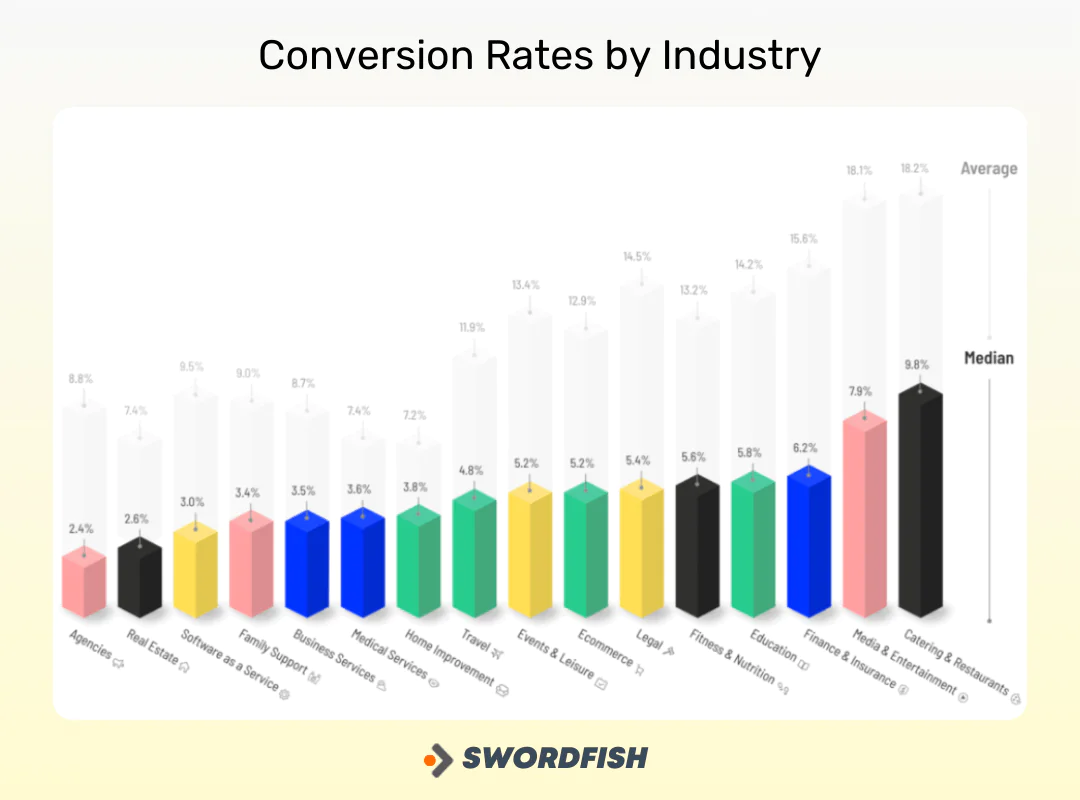
Also, selling to a business (B2B) differs from selling directly to a consumer (B2C). B2B funnels are typically longer and more involved. While a consumer might click and buy, a business often needs more information like case studies, detailed guides, or product demos.
For those interested in building a B2B sales funnel, it’s crucial to understand these details.
Why Do B2B Businesses Need A Sales Funnel?
Buying products or services in the business-to-business (B2B) market is often complex. Gartner’s research shows that typically, there are 6 to 10 people making the final purchase decision. Each of these individuals comes to the table with their own set of information they’ve found on their own.

This complexity means that B2B sales teams must be very methodical in how they sell. They should have a clear B2B sales funnel that guides sales representatives in turning potential clients into actual buyers. This method is essential for long-term success.
The 6 Stages Of A Solid B2B Sales Funnel
The concept of a B2B sales funnel isn’t new; it’s been a cornerstone of customer acquisition since businesses first began hiring sales consultants.
Here’s a breakdown of the six fundamental stages of a typical B2B sales funnel —
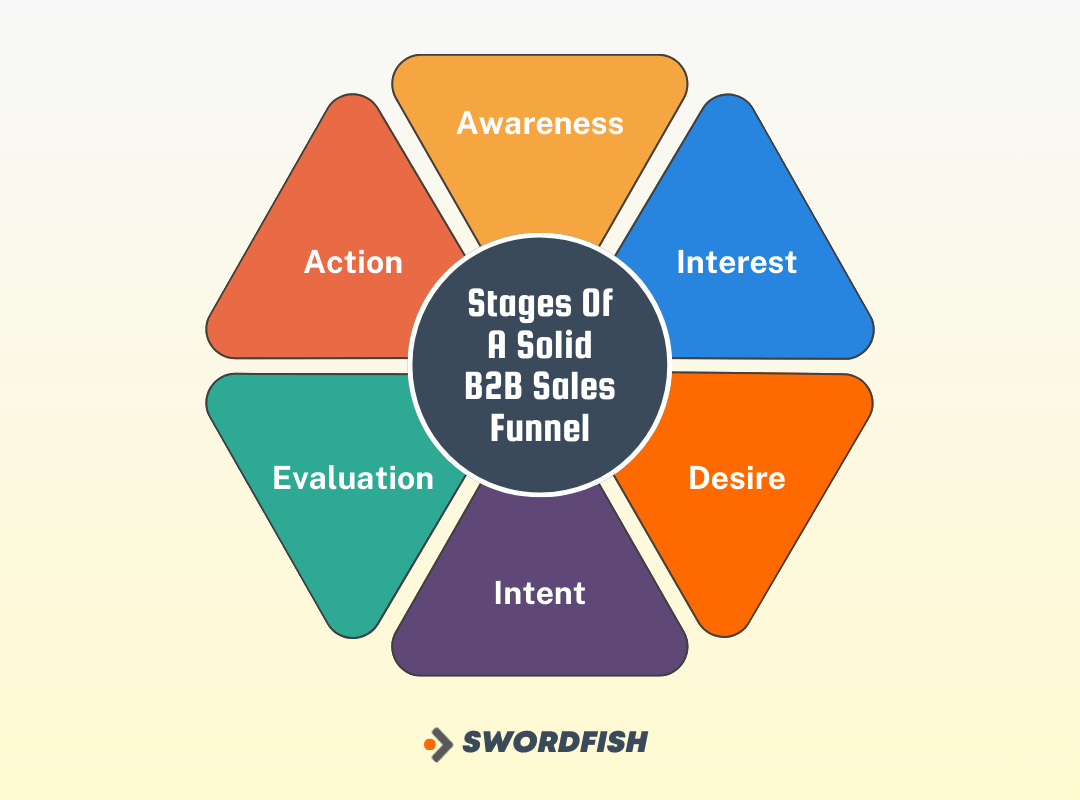
Awareness
This initial phase is all about making your presence known to potential clients. Whether it’s your marketing team’s effort or your own, the goal is making your company’s name memorable will spark curiosity about what you do.
Interest
At this point, potential buyers are intrigued and seek more details about what you’re selling. They’re entering a phase of active research, looking into your company’s products or services, and starting to inquire about specifics like pricing and delivery times. If you have a B2C or B2B marketplace platform this is probably where they will end up looking for information.
Desire
Desire emerges when prospects actually begin to want what you’re offering. They’ve likely researched your products or services and are now considering making a purchase.
Intent
Here, the fog lifts! Intent is when a prospect has decided they want to buy from you but needs assistance in choosing the best product or service for their needs.
Evaluation
A critical stage, the evaluation stage is when a prospect weighs the merits of your product and determines if it’s worth their investment of time and money.
Action
Last but not least, the action stage occurs when a customer commits to making a purchase, like completing a form on your website to get more details on pricing and availability.
Incorporating these stages effectively can improve B2B sales funnel conversion rates, turning prospects into customers more efficiently.
The Difference Between B2C and B2B Sales Funnels
B2B (business-to-business) and B2C (business-to-customer) sales funnels are kind of similar. People buying stuff go through similar steps.
But there are a few big ways they’re different —
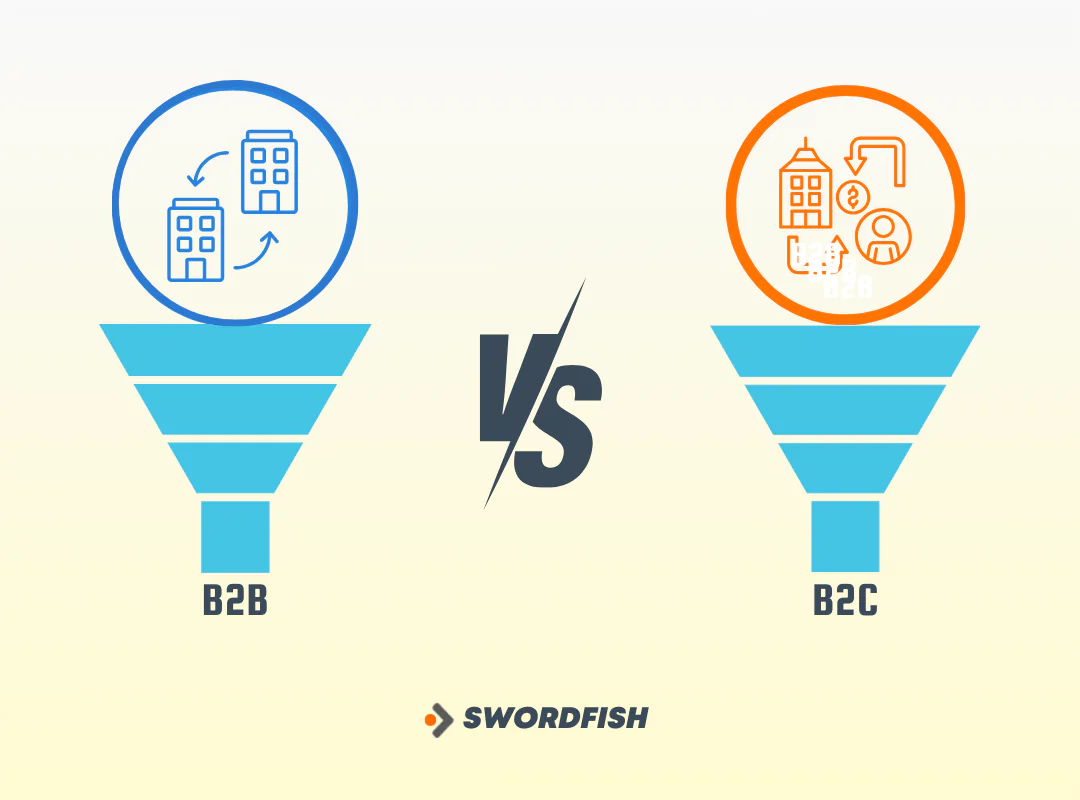
|
Aspects |
B2C Sales Funnel |
B2B Sales Funnel |
|
Decision-Makers |
Typically one, the individual consumer. |
Often up to 10 different people, as reported by Gartner. |
|
Sales Cycle Length |
Generally shorter, as it involves fewer decision-makers. |
Longer, sometimes up to a year, due to the number of decision-makers. |
|
Support and Guidance |
Less intensive; consumers may require basic assistance. |
More intensive; B2B buyers often need detailed support and reassurance. |
|
Buyer’s Journey |
Consumers usually pass through the stages of the funnel individually and sequentially. |
Decision-makers may go through the funnel stages at different times. |
|
Evaluation Period |
Tends to be quicker as the purchase is often for personal use. |
Can be extended, with potential weeks spent in the evaluation stage awaiting approval from stakeholders. |
|
Product Use |
Direct use by the consumer. |
B2B buyers might resell the product or use it to support their own customers. |
How to Create a B2B Sales Funnel and Its Importance
A well-established sales process will help you better understand the process of making a sale. It also enables you to see what is working and what is not to make adjustments when needed.

Creating a clear sales process is crucial for understanding how sales happen and for identifying what’s effective and what isn’t. This allows for necessary adjustments along the way.
Set Up a Clear Sales Process
Sales can be complex with many components to manage. By establishing a B2B sales funnel, you can maintain a clear view of all sales activities. Start by defining a sales process that suits your company’s needs, which will align your team and simplify tracking your sales progress.
Specialize Your Sales Team
Allowing your sales team to specialize is a key step in crafting a B2B sales funnel. Specialists can concentrate on a few key areas, offering in-depth services that are more valuable to customers. They’ll also gain a deeper understanding of the customers’ needs, creating benefits for both the customer and your company.
Make Communication Central
Effective communication is the cornerstone of a successful B2B sales funnel. Utilize social media, email, and phone calls to foster a conversation with customers.
The goal is to enhance their understanding of what you offer, building a relationship that facilitates the sales process.
Track Your Team’s Actual Performance
To start shaping a B2B sales funnel, it’s vital to assess your team’s performance accurately. Find a method that fits well with your team’s dynamics. You could track the quantity of leads generated, appointments scheduled, or deals completed.
These figures will give you a clear picture of your team’s effectiveness and highlight areas for improvement.
Maintain Customer Engagement
The journey your customers take from first contact to final sale is key to your business’s success. A well-functioning B2B sales funnel provides a smooth path for this journey. Make sure you’re checking in with your customers to understand their experiences and to refine your sales process.
A regular and systematic follow-up routine will help you build a successful sales funnel.
Organize Your Sales Process
Organization is critical in a B2B sales strategy. When your processes are in order, tracking leads, maintaining a robust pipeline, and achieving strong sales figures becomes more manageable. Here’s how to stay organized:
- Use a CRM system to keep tabs on your leads and their status.
- Develop a visual pipeline map to see where prospects are in the B2B sales funnel stages.
- Implement a lead scoring system to prioritize your leads effectively.
How to Guide Buyers Through the B2B Sales Funnel
The B2B sales funnel involves several steps before a lead becomes a customer. The challenge is to guide potential customers through these steps effectively without using too many resources or being too aggressive, which might push them away.
Recognize Their Current Stage
To support a potential customer properly, you need to pinpoint their exact position in the sales funnel. When your B2B business operates online, you can clearly see how a potential buyer interacts with your company. Look for:
- The specific products (SKUs) they are interested in.
- The emails from your company they open.
- The landing pages they visit, like delivery information, which suggests they value quick delivery.
- The frequency of their visits to your website.
- The parts of your website they focus on, using tools like heat maps or scroll depth reports.
Shift In-Person Prospects to Online Channels
Selling to businesses used to rely on cold calls, trade fairs, and paper-based billing. However, moving your B2B operations online offers significant advantages.
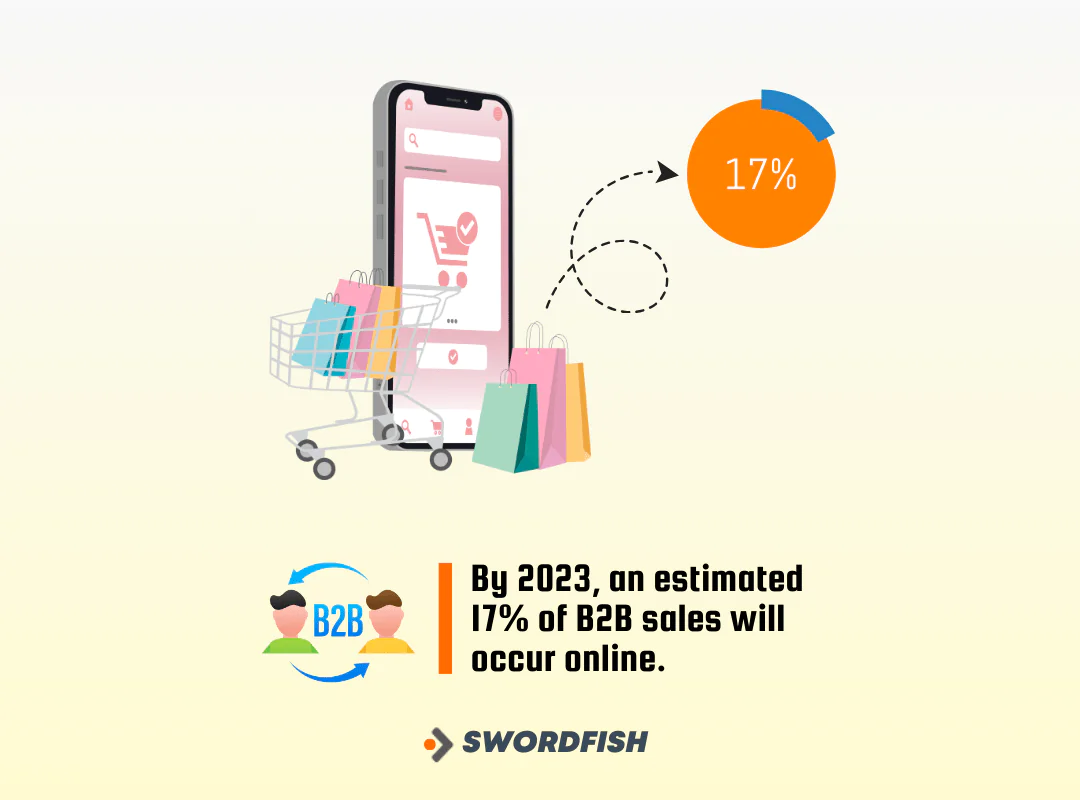
It’s estimated that by 2023, 17% of B2B sales will happen online. Research indicates that 90% of B2B buyers now expect a direct-to-consumer (DTC) level of online experience. Yet, over half report dissatisfaction with the current online purchasing processes provided by vendors.
When you determine where a prospect is in the sales cycle, guide them towards your online platform. The key to successfully moving B2B prospects online, particularly those who are mid-funnel, is to entice them with something valuable.
Whether it’s a free sample, a discount, or quick delivery, these benefits are not hindered by traditional fulfillment methods. By doing this, you not only improve their buying experience but also provide a practical and effective B2B sales funnel example in action.
Create Targeted Content for Each Funnel Stage
Craft content specifically for each part of the sales funnel to address potential customers’ questions as they move through it. Gartner found that B2B buyers who get helpful, specific information are almost 3 times more likely to have an easy buying experience and much less likely to regret a big purchase.
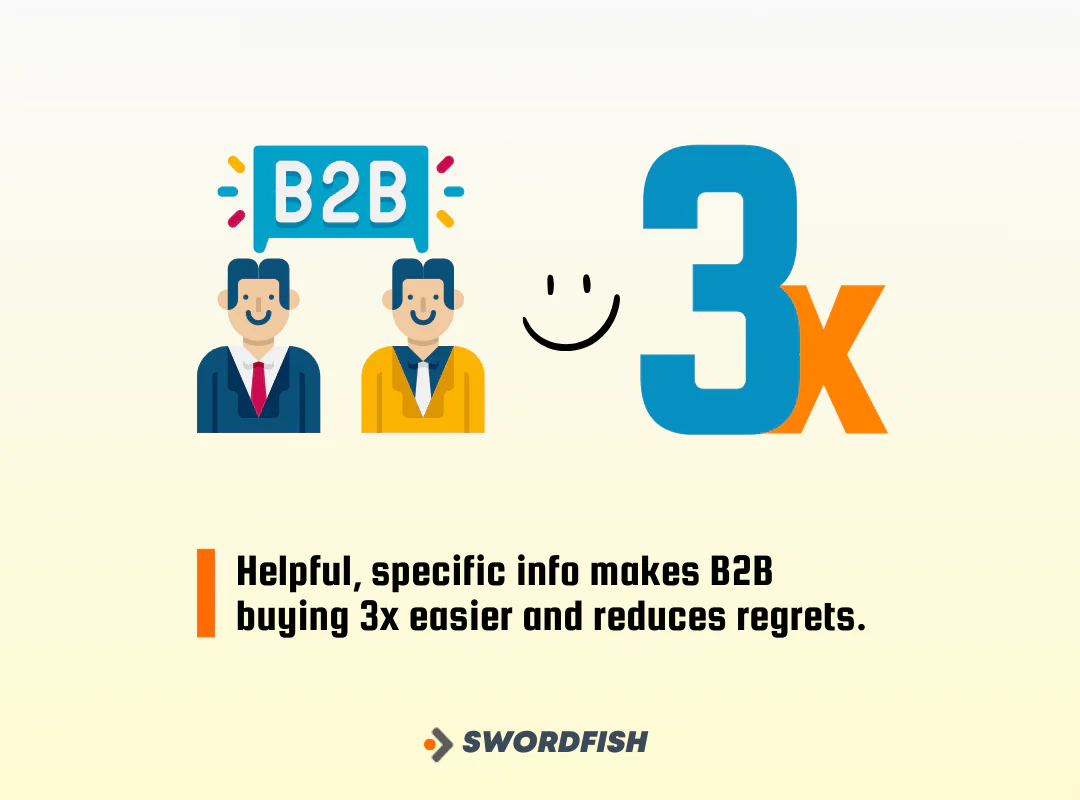
Tailoring your B2B sales approach with personalized content is crucial, as buyers engage differently at each stage of the funnel.
Here’s a simple breakdown —
-
Top of the Funnel
Focus on the buyer’s initial problem, not your brand. Offer educational content like blog posts, webinars, YouTube videos, or social media posts that address their challenges.
-
Middle of the Funnel
Buyers are now evaluating trustworthy suppliers. Earn their trust with content that showcases your expertise and product quality, such as detailed blog posts, case studies, or whitepapers.
-
Bottom of the Funnel
Confirm that you’re the right choice. Provide white papers, testimonials, and case studies showing how similar customers have succeeded with your product.
Provide Sales Representative Assistance
Even though B2B buyers spend only about a quarter of their decision-making time with sales reps, reaching out to them significantly increases their chances of making a purchase.
The journey through the B2B sales funnel can take months, and any lingering questions can slow it down unnecessarily. Have a sales team ready to assist with decision-making when leads need extra guidance. Support can come in various forms —
- Live chat services
- Phone support
- Email communication
Remember, not every conversation has to push a sale. You want to remove any obstacles that keep buyers from moving to the next stage of the sales funnel, and gently explain how your product can help.
Focus on After-Sale Engagement
The B2B sales process doesn’t end with the first purchase. A positive initial experience can lead to recurring business, which accounts for 44% portion of company revenue.
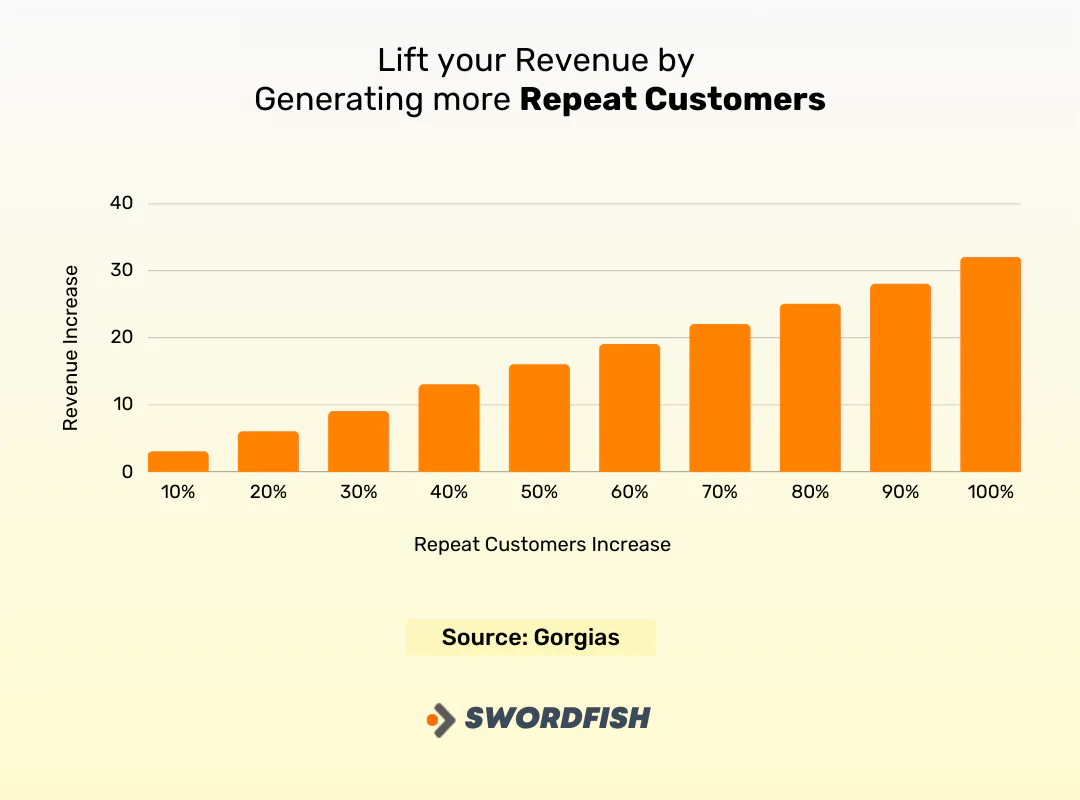
To keep customers coming back, nurture your relationship with them. Much of this can be automated:
- Send follow-up emails with personalized suggestions based on past purchases.
- Support retailers with ideas for product displays, updates on industry trends, and key points to mention in product descriptions.
- Invite loyal customers to meet at industry events or trade shows.
- Feature them as a preferred supplier or retail partner on social media to help them boost their brand visibility.
Different Models Of The B2B Sales Funnel
Every business owner understands that sales are crucial to their company’s success. Therefore, it’s vital to constantly seek new methods to increase sales. One effective strategy is to analyze various B2B Sales Funnel models.
Let’s look at an example of a B2B sales funnel and its application to your business.
The AIDA Model
The AIDA model, standing for Attention, Interest, Desire, and Action, is the original sales funnel concept. Created by American businessman St. Elmo Lewis in 1898, it outlined an ideal framework for advertising.
Although it has undergone several iterations, Arthur Sheldon’s use of the term in 1911 made the AIDA model particularly well-known.
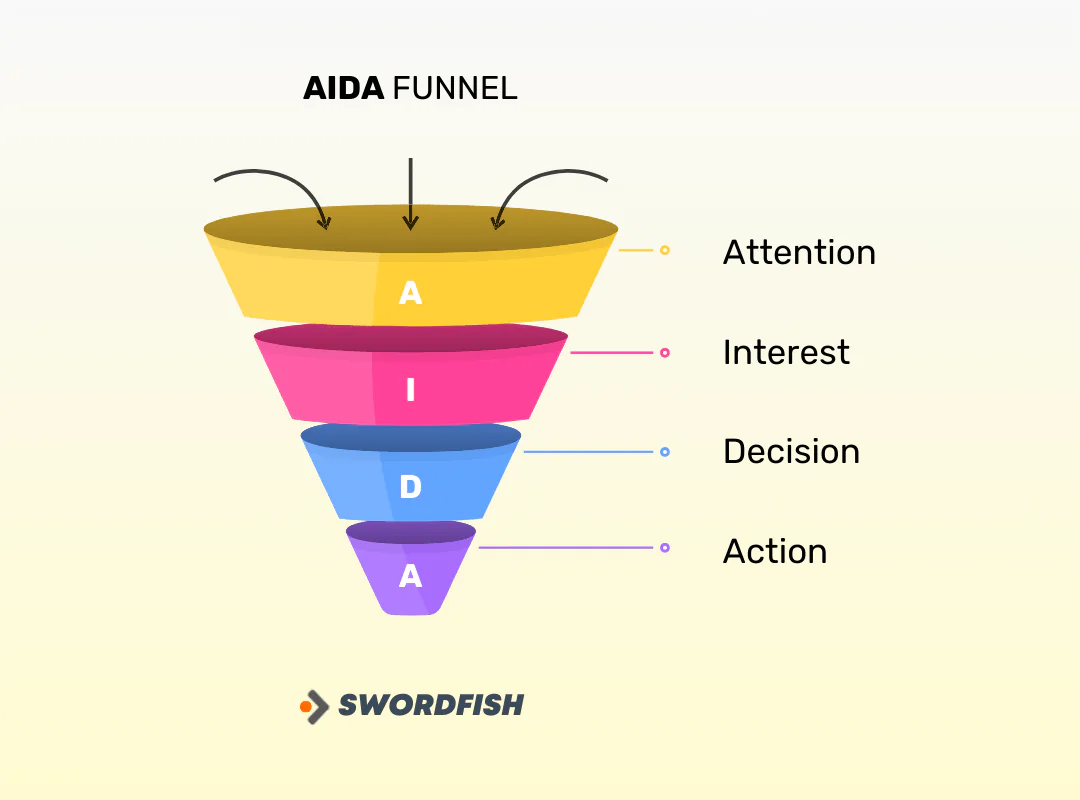
Although some marketers have renamed phases and added new stages to AIDA, the core concept of AIDA has stayed consistent —
- You become aware of a product.
- You consider it.
- You develop a desire for it.
- You purchase it (and feel something about the purchase).
In a B2B context, AIDA might translate to —
- Awareness: Decision-makers discover a product or service.
- Evaluation: They assess its advantages and disadvantages, comparing it to others.
- Intention: They decide on the supplier.
- Purchase: The transaction is completed.
A B2B purchase is usually more logical than a B2C purchase, which is more emotional. However, emotions still play a role, and savvy sellers and marketers don’t overlook the emotional aspect of buying decisions.
The Forrester Model
Forrester’s research on the marketing funnel has shed light on how buyers navigate the purchasing process, especially with the wealth of online information. Brian Haven, in his 2007 report, highlighted that informed buyers can also become advocates for a brand.
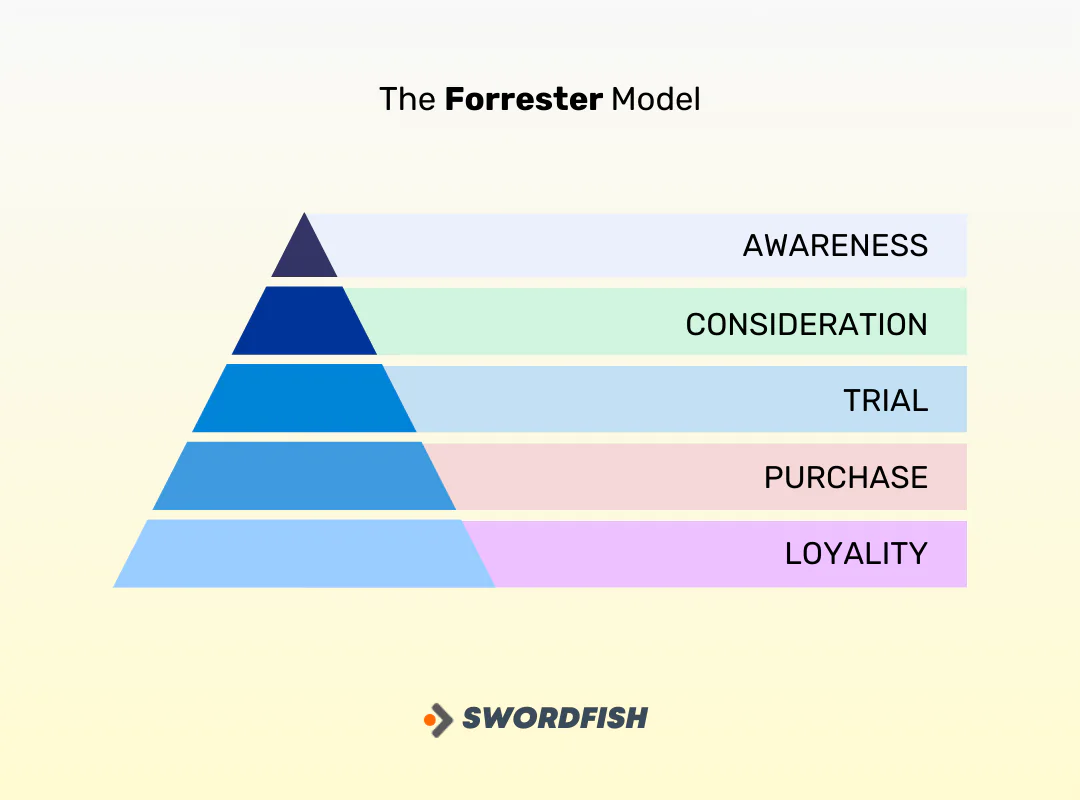
The model outlines five interconnected stages —
- Awareness: Customers recognize they have a need that your product or service can fulfill.
- Consideration: They deliberate on whether to choose your offering over competitors’.
- Trial: Customers experiment with your product or service, weighing it against others available.
- Purchase: They have made a purchase and are content with the decision.
- Loyalty: Customers develop a strong preference for your brand and repeatedly return, which emphasizes the importance of customer retention efforts.
McKinsey’s Loyalty Loop
In 2009, McKinsey updated the traditional AIDA model by adding a loyalty loop, illustrating how a positive experience after purchase encourages repeat business.
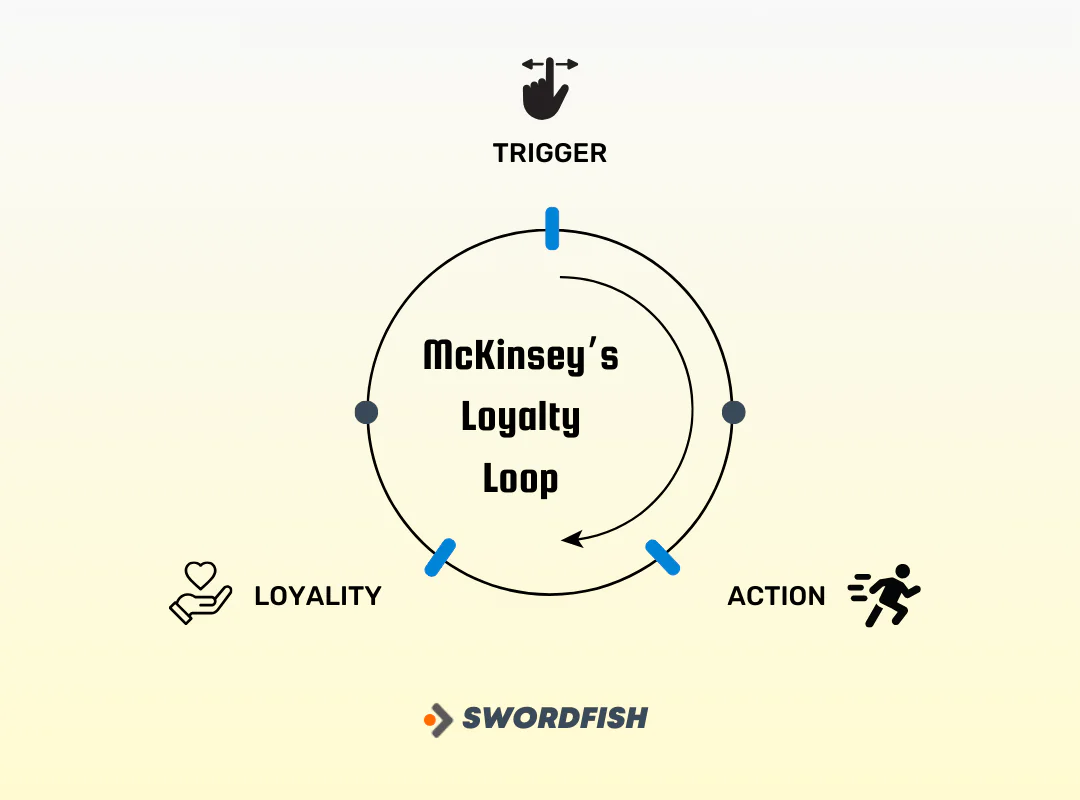
McKinsey’s research indicated that while 75% of first-time B2B buyers prefer to speak with sales representatives before buying. And only 15% of returning customers feel the need to have a conversation with sales when making subsequent purchases.
Heinz Marketing’s Bowtie
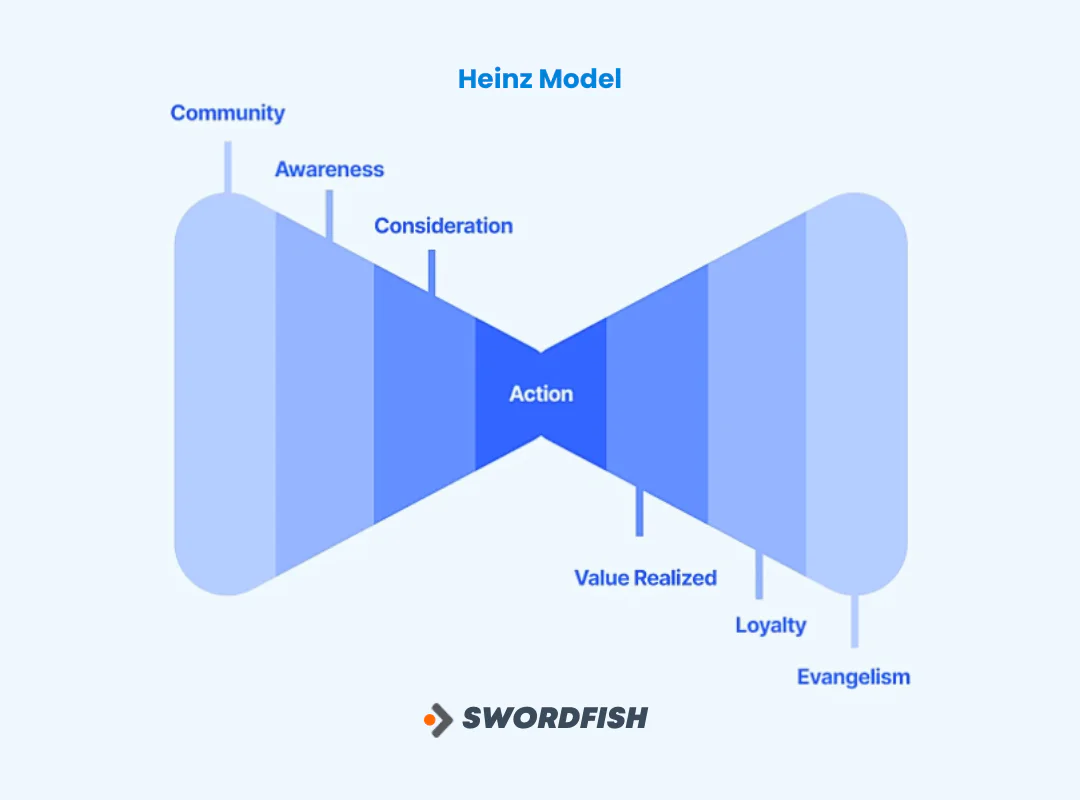
In 2010, Matt Heinz pointed out two important things about the usual B2B sales funnel —
- It didn’t pay enough attention to possible customers who weren’t ready to buy right away but might buy in the future.
- The funnel should look more like a bowtie, showing the different ways customers interact with a seller after they buy something.
People often call this the Bowtie model because of its shape, and you can picture it standing up or lying flat.
The Conversion Funnel
The Conversion Funnel is widely used in B2B sales for its simplicity compared to other models.
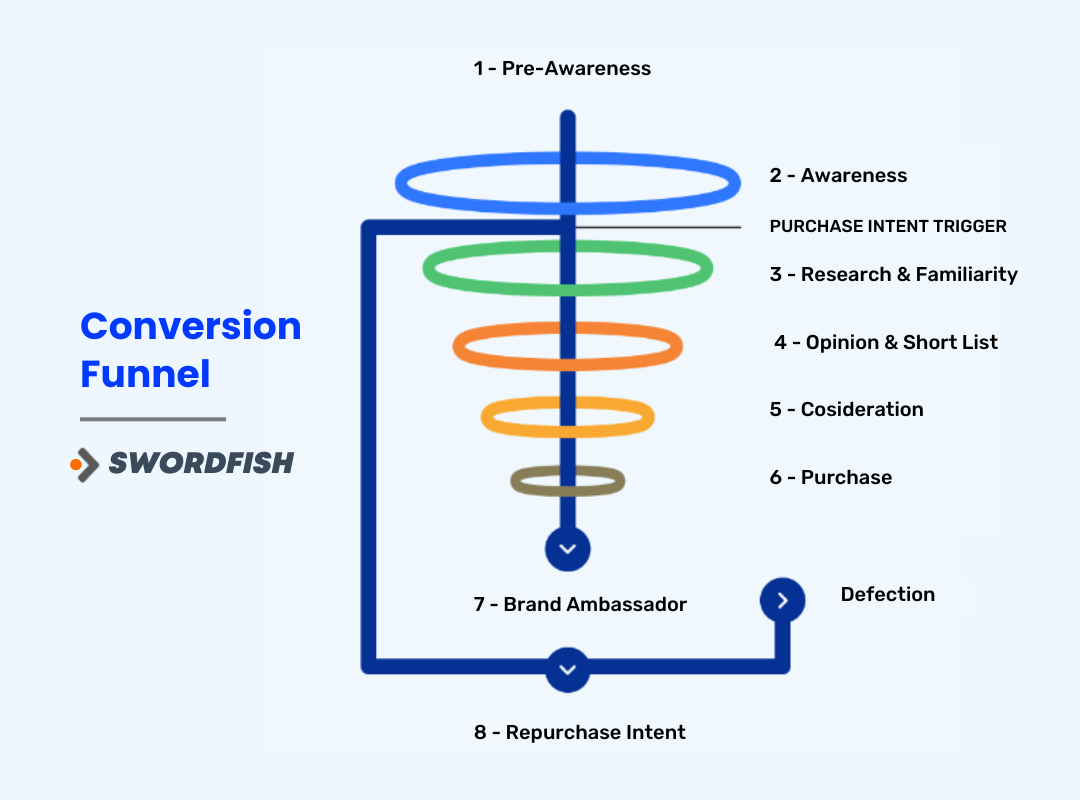
It includes several key stages —
- A pre-awareness stage where potential customers are not yet aware of the need for your product.
- A trigger event that sparks interest in your product.
- The formation of opinions and the creation of a shortlist of potential suppliers.
- The intention to repurchase, showing customer loyalty.
Defection, where customers choose another supplier, is also critical as it offers insights for future strategy and improvements.
The model recognizes that any customer can become either a promoter or a detractor of your brand.
How to Optimize Your B2B SaaS Sales Funnel
Optimizing your B2B SaaS sales funnel is vital for turning prospects into loyal customers. Here are some strategies to ensure your sales funnel is efficient and effective —
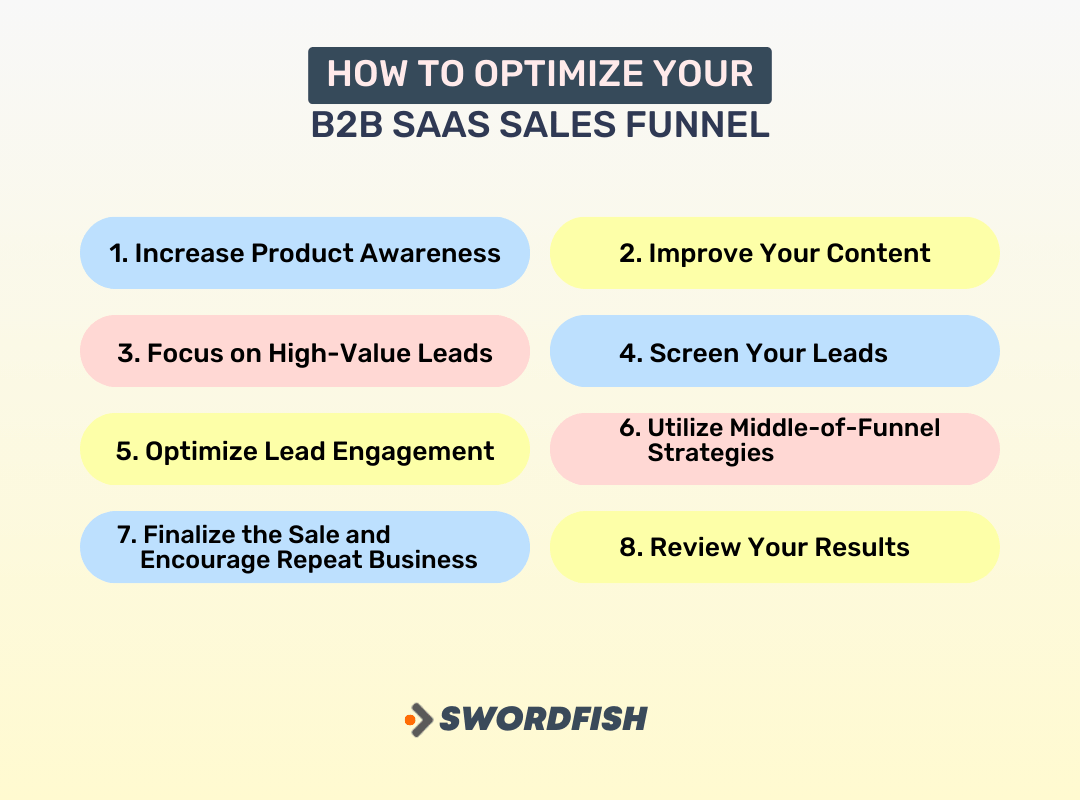
1. Increase Product Awareness
Use top-of-funnel (TOFU) content to make more people aware of your product and its benefits. For instance, Adobe showcases its Creative Cloud on Facebook with an engaging video and a link to more content about their 3D art tools, which relates to their products.
Other TOFU strategies can include instructional guides, tutorials, and broad social media campaigns.
2. Improve Your Content
When optimizing content, focus on three areas —
- Spreading your message across multiple channels
- Establishing your brand as a thought leader
- Delivering content in a way that reaches your audience effectively
The aim is to give potential customers a detailed understanding of your brand and what makes it unique.
3. Focus on High-Value Leads
Begin funnel optimization by targeting leads that are most likely to convert. Look at how these customers find you and tailor your value propositions to meet their specific needs.
This approach is particularly powerful when reflected in your website’s design and functionality, which should be continuously refined.
4. Screen Your Leads
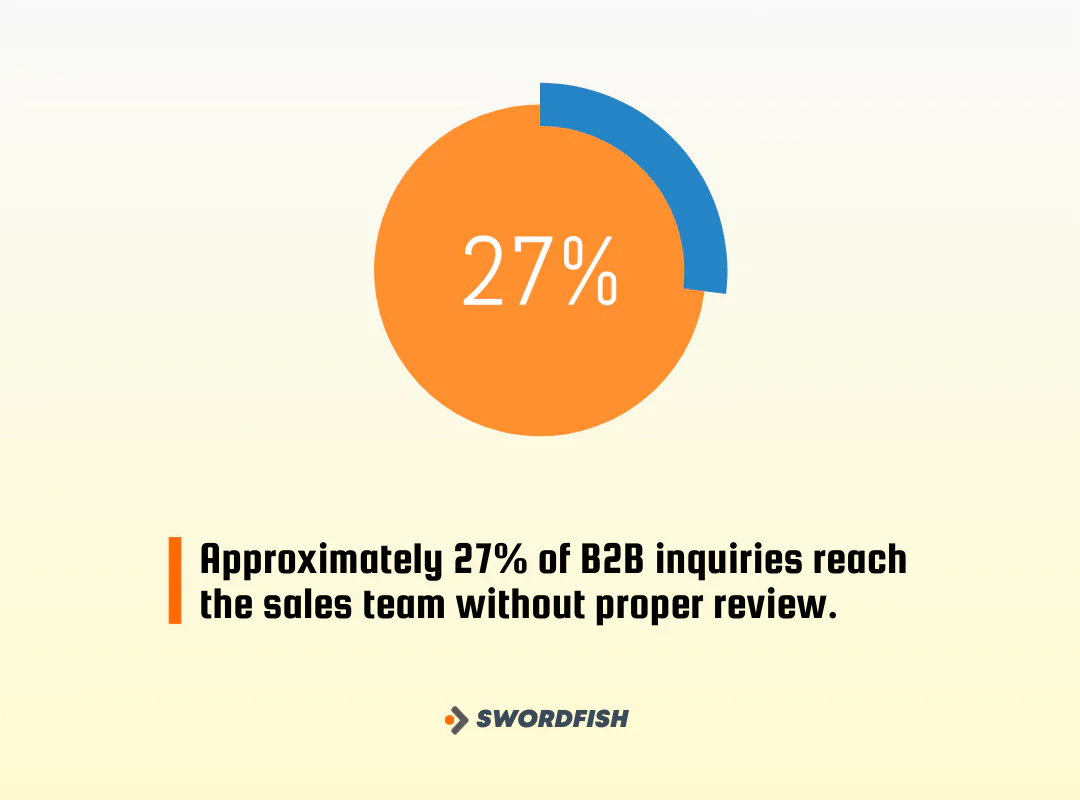
About 27% of B2B inquiries make it to the sales team without being properly reviewed. This is an issue because unqualified leads are unlikely to result in sales. Take the time to confirm that leads are genuinely interested and have the power to make purchase decisions.
5. Optimize Lead Engagement
Focus on engaging with potential clients and answering their questions. The more effective your engagement and B2B SaaS marketing tactics, the higher your chances of sealing the deal and increasing SaaS revenue.
6. Utilize Middle-of-Funnel Strategies
Middle-of-the-funnel (MOFU) strategies are all about gauging purchase intent. It involves more than just engaging leads; you must understand their specific needs and adjust your services to fit their budget.
The more accurately you can identify and address their main issues, the more successful your MOFU strategies will be.
7. Finalize the Sale and Encourage Repeat Business
It’s time to seal the deal. Provide your leads with a complete contract and a clear outline of the service agreement, and discuss the duration of the contract. Depending on your service, you might offer a free trial or a flexible cancellation policy initially.
Aim for a long-term commitment, ideally a year or more, but be prepared for some hesitation from B2B clients about lengthy contracts. Regardless of the contract duration, the key is to deliver exceptional service that will make clients want to continue doing business with you.
Remember, there’s value in the deals that don’t close. Instead of writing them off, review these situations with your team to identify what worked and what can be improved.
8. Review Your Results
After fine-tuning your process, you might find that around 20% of your leads become customers. This metric is significant, especially considering that only 32% of companies have a clear understanding of their marketing funnels.
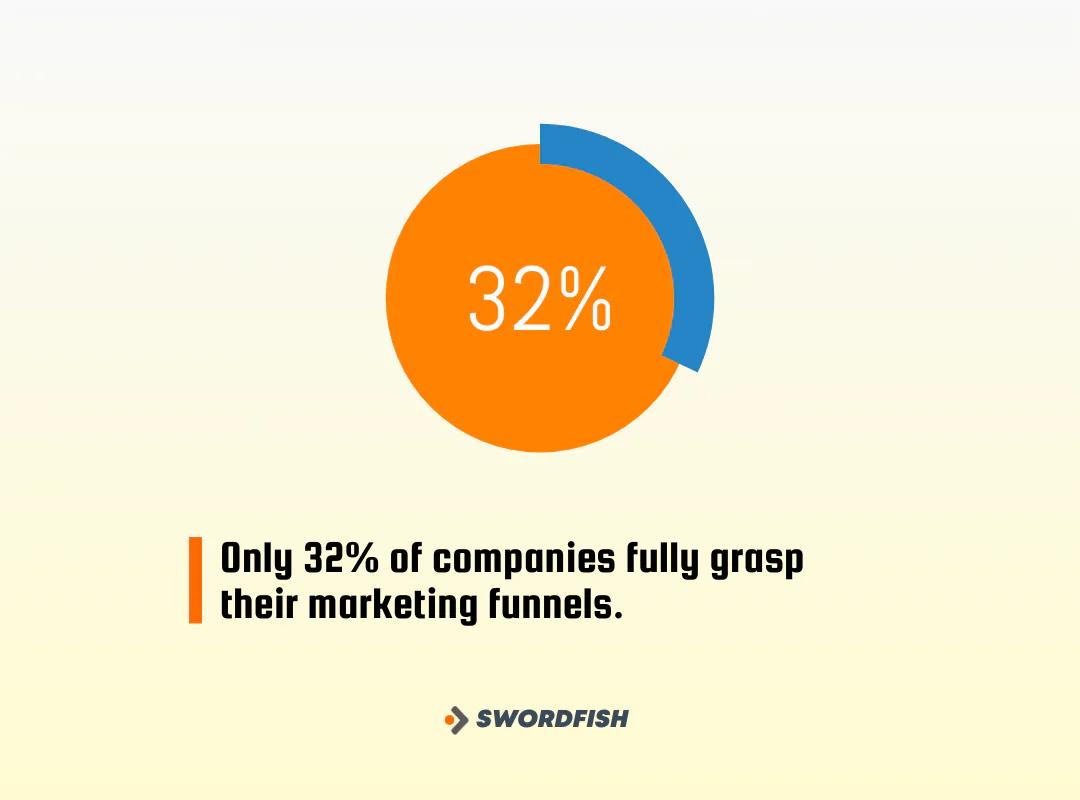
Therefore, it’s essential to regularly measure your success rates to ensure you’re on the right track. If the numbers aren’t where they should be, reevaluate your B2B SaaS sales strategy and adjust where necessary.
Swordfish AI: Best Tool for Collecting B2B Leads
Before you start creating your B2B sales funnels, you must have proper leads that you can nurture and get conversion. Using Swordfish AI, you can find personal and business contact details, such as emails and phone numbers, for potential clients.
It searches through social media profiles to give you correct information quickly. We’re known for getting contact details right, thanks to the proprietary verification system and unique number system.
Sales and recruitment professionals trust it because it offers over 33% more cell phone numbers and 45% more accurate numbers than other top services.
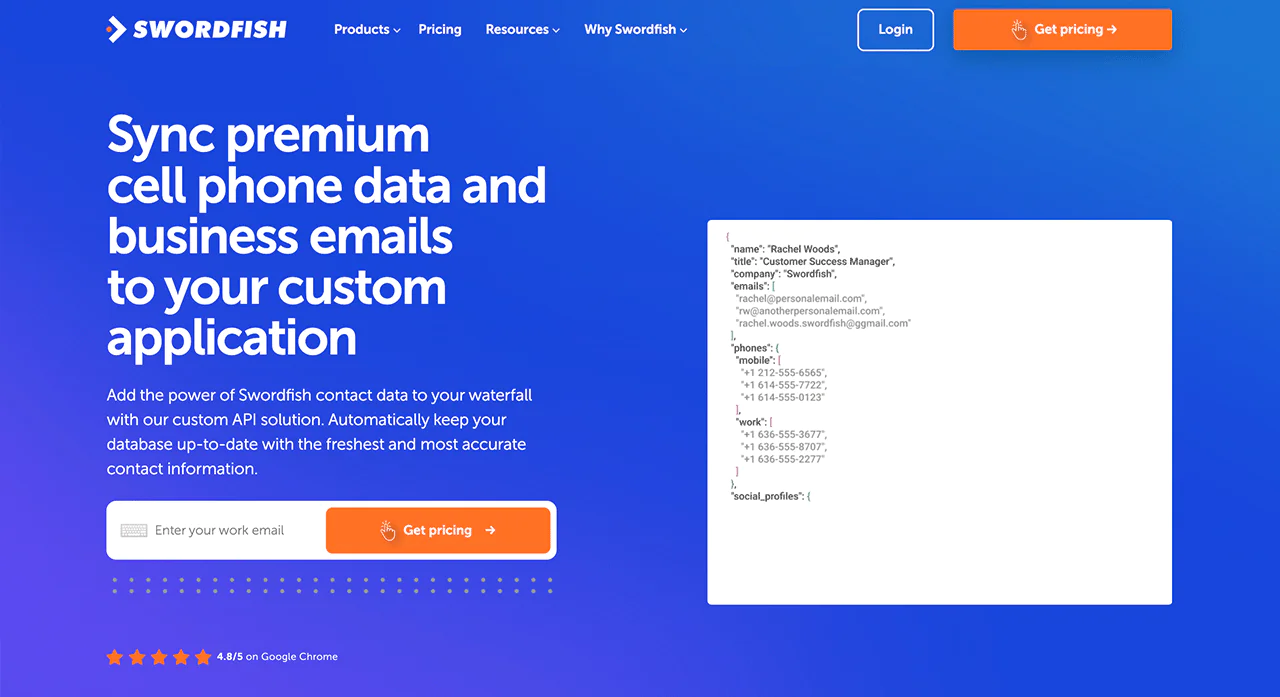
Key Features of Swordfish AI
Take a look at some of its notable features —
Chrome Extension
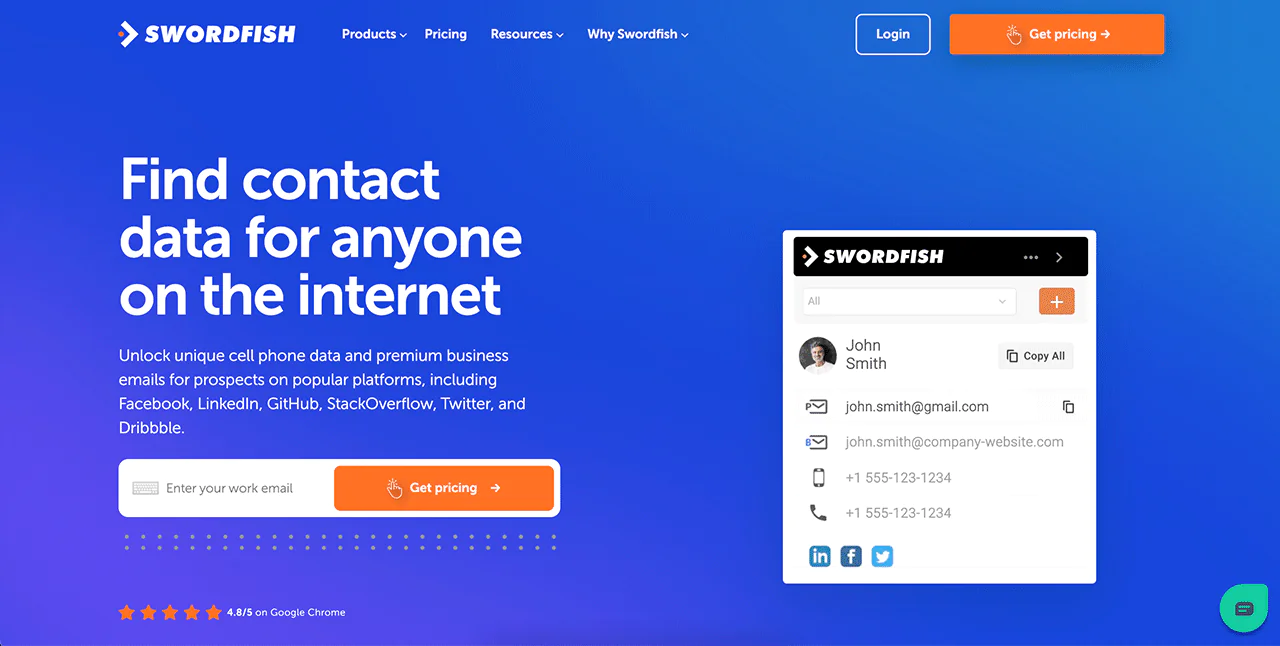
Swordfish AI offers a Chrome extension that allows you to find contact information across multiple internet platforms, including LinkedIn, Twitter, Facebook and more.
Prospector Tool
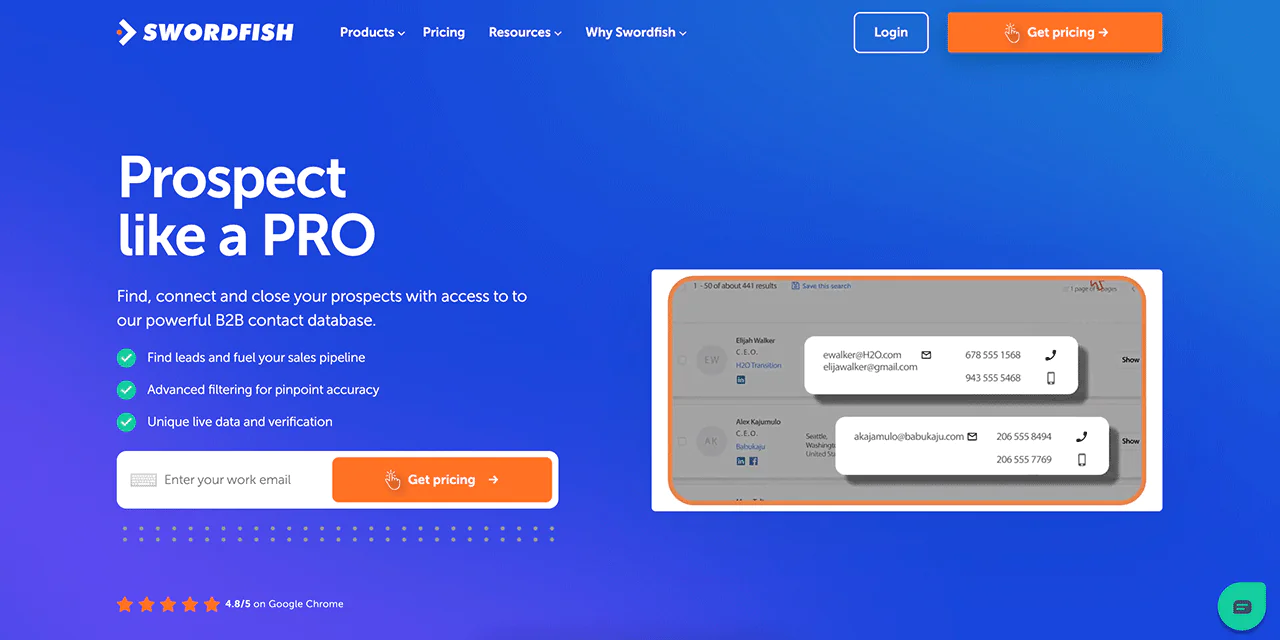
You can create targeted email or calling lists with advanced filters for precise lead generation using our prospector feature.
Bulk Contact Data
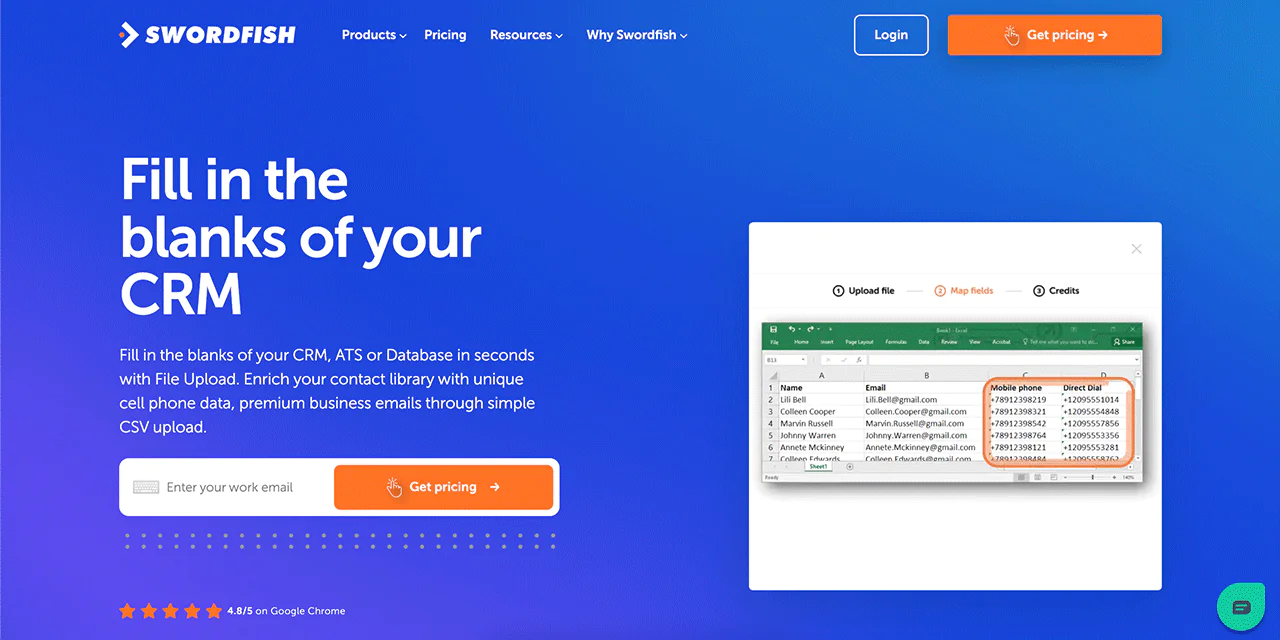
You can upload a CSV file to enrich their CRM databases with missing contact information quickly.
Real-Time Validation
Swordfish AI ensures the accuracy of contact data with real-time validation checks for line connectivity.
API Integration
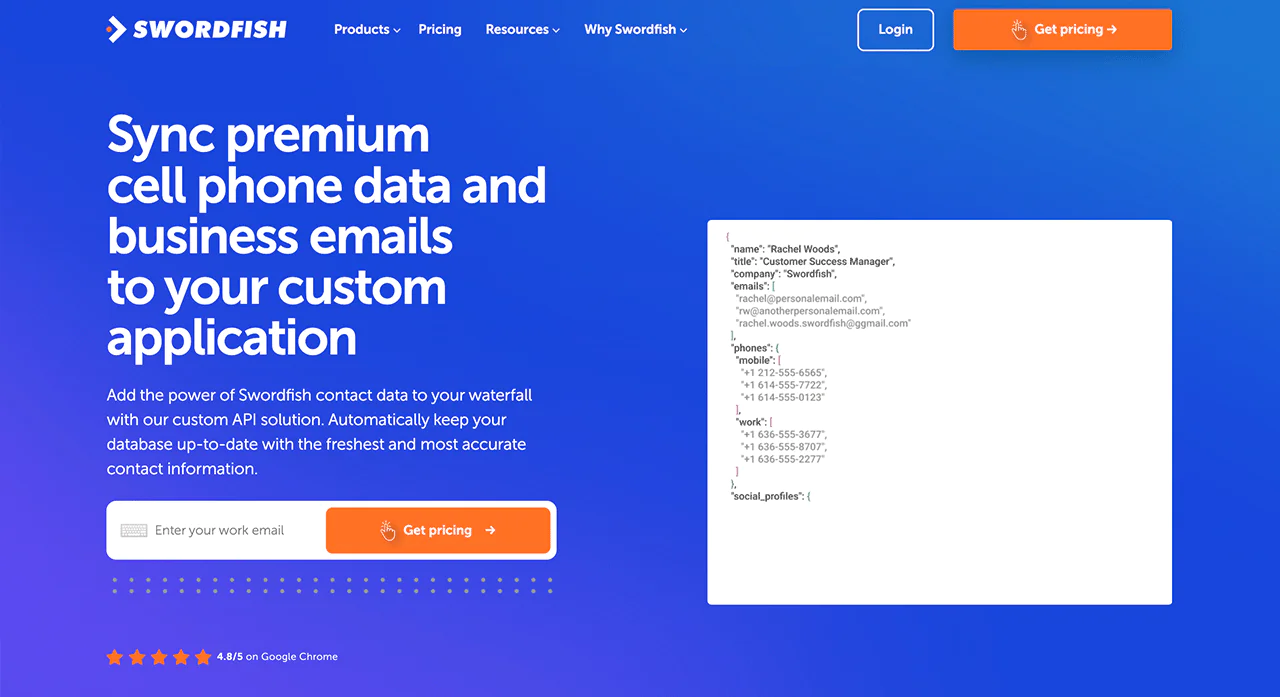
The platform offers API integration to power applications at scale with unique Swordfish data.
Compliance
Swordfish AI is designed with security in mind, ensuring compliance with GDPR and CCPA regulations.
Conclusion
It’s clear that B2B sales funnels are your roadmap to conversion success. We’ve gone over the six stages of a B2B sales funnel: Awareness, Interest, Desire, Intent, Evaluation, and Action.
These stages are crucial in nurturing leads and guiding them towards a purchase. By understanding and optimizing each phase, you can improve conversion rates and foster long-term customer relationships. In order to stay competitive and effective in B2B sales, you must continuously adapt and refine your sales funnel.
For those of you seeking to simplify your lead collection and prospecting, we suggest trying Swordfish AI. Take action today and upgrade your sales process with Swordfish AI.
Frequently Asked Questions
What does a B2B content marketing funnel do?
A B2B content marketing funnel is a strategy that guides potential clients from first learning about your company to becoming loyal customers and even champions of your brand.
What’s a typical conversion rate for a sales funnel?
Usually, a good sales funnel conversion rate falls between 3% and 7%. However, the specific rate can vary based on your product, target audience, and sales approach.
How large should your sales funnel be?
Your sales pipeline should have at least twice the value of your sales goal. This ensures a more reliable revenue stream, allows for better use of sales efforts, and gives you the leeway to focus on the most promising deals.

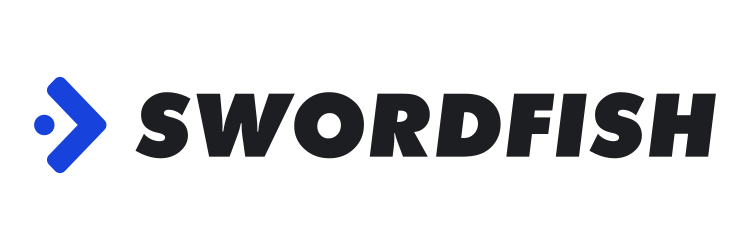
 View Products
View Products


